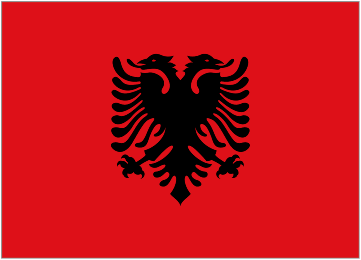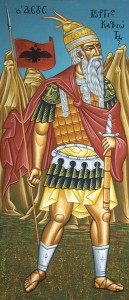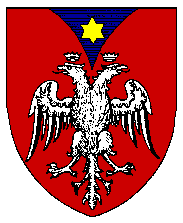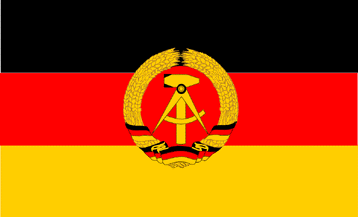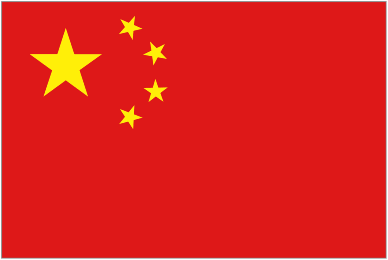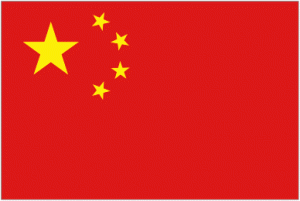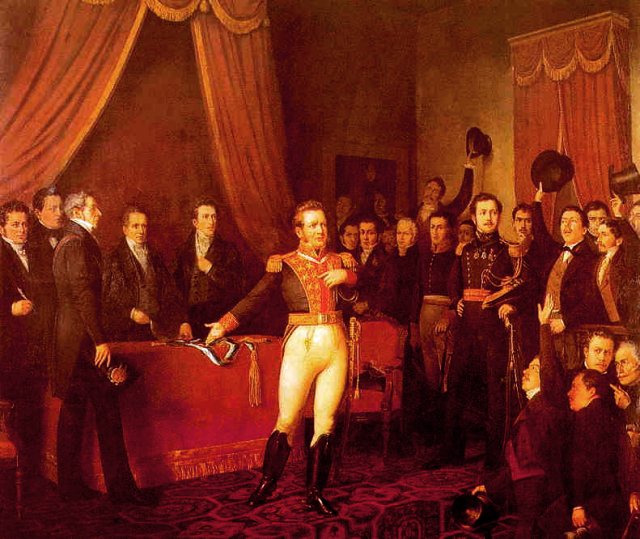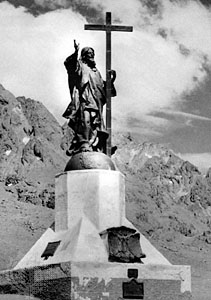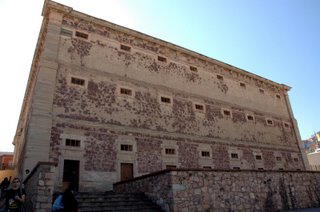November 30
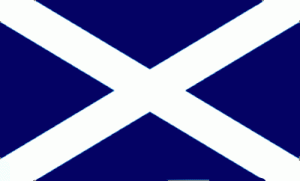
November 30, St. Andrew’s Day, is the national day of Scotland.
St. Andrew is said to be the first disciple of Christ, though he’s got some competition from his brother Simon Peter.
As Jesus was walking beside the Sea of Galilee, he saw two brothers, Simon called Peter and his brother Andrew. They were casting a net into the lake, for they were fishermen. “Come, follow me,” Jesus said, “and I will make you fishers of men.”
— Matthew 4:18-19
The Book of John, however, proclaims Andrew and an unnamed disciple of John the Baptist as the first two, and Simon Peter as the third. When John the Baptist calls Jesus “the Lamb of God”, Andrew and the unnamed disciple choose to follow Jesus. Only after spending the day with Jesus, does Andrew get his brother Simon Peter to tell him they’ve found the Messiah.
Andrew is also present with Peter, James, and John on the Mount of Olives opposite the temple when Jesus tells them of false prophets and prophesies to be fulfilled:
“Nation will rise against nation, and kingdom against kingdom…
“…You will be handed over to the local councils and flogged in synogogues…Whenever you are arrested and brought to trial, do not worry beforehand about what to say. Just say whatever is given you at the time, for it is not you speaking, but the Holy Spirit.”
— Mark 13
We don’t know Andrew’s last words. According to the Acts of St. Andrew, a third century text, he preached in Asia Minor, the Black Sea area, and Greece, and was crucified around 60 A.D. Tradition has it he was tied (not nailed) to an x-shaped cross, now known as St. Andrew’s Cross, or Saltire. Today the diagonal cross forms the banner of Scotland, of which St. Andrew is the patron saint. (Andrew the Apostle: Profile & Biography – About.com)
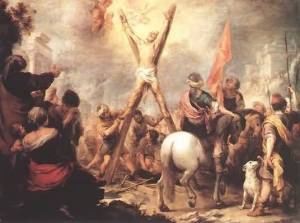
Saint Andrew is also the patron saint of Russia, the Ukraine, Greece, and Romania. But why Scotland? A country he never came a thousand miles from? The answer may lie with some of the Saint’s relics.
“…the monastery of Kilrymont (later St Andrews) in Fife claimed to have three fingers of the saint’s right hand, a part of one of his arms, one kneecap, and one of his teeth. It is possible that these were brought to Fife (which was at that time part of the kingdom of the Picts) from the neighbouring kingdom of Northumberland, where veneration of St Andrew was particularly strong. St Andrews became a popular pilgrimage destination after miracles were attributed to the saint.”
St. Andrew’s Day didn’t become an official Bank Holiday in Scotland until 2006, a move that met with some controversy.
“There will always be someone to argue against something as unambiguously positive and celebratory as Saint Andrew’s Day. They’ll say it’s all a load of patriotic nonsense; they’ll say that Saint Andrew never set foot in Scotland, they’ll question why we have to share a saint with the Ukraine, Russia, Greece and so on. Maybe they’ll whinge that it’s too Christian, too partial, or not multicultural enough, and ask why it has to be that particular saint in the first place. But it all misses the point. Let’s face it, nobody thinks Saint Patrick’s Day is really about Saint Patrick; everybody knows it’s all about Ireland. And so it should be with Saint Andrew’s Day. It’s not really about celebrating Saint Andrew, it’s about celebrating Scotland.”
Historically, the night before St. Andrew’s Day served as a divination night for unmarried girls, who could discern information about their future mate through age-old rituals:
“Throw a shoe at a door. If the toe of the shoe pointed in the direction of the exit, then she would marry and leave her parents’ house within a year…
“Peel a whole apple without breaking the peel and throw the peel over the shoulder. If the peel formed a letter of the alphabet, then this suggested the name of her future groom.”
— http://www.woodlands-junior.kent.sch.uk/months/andrew.html


